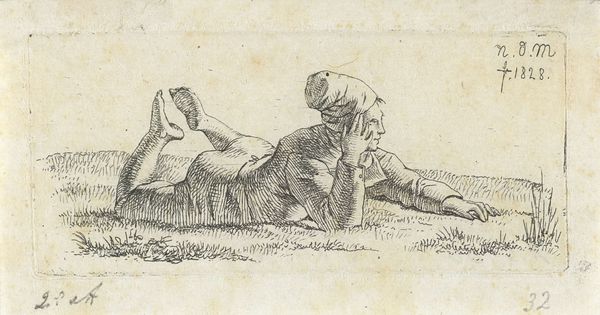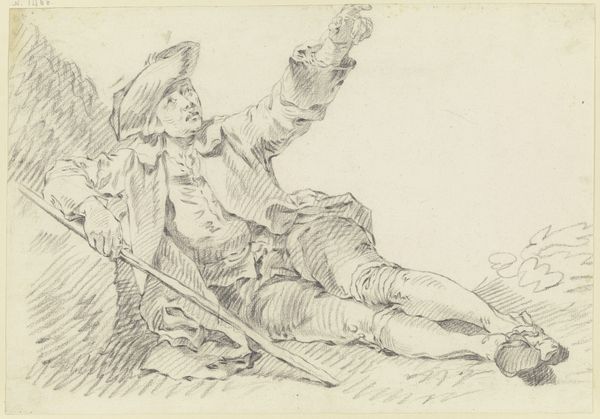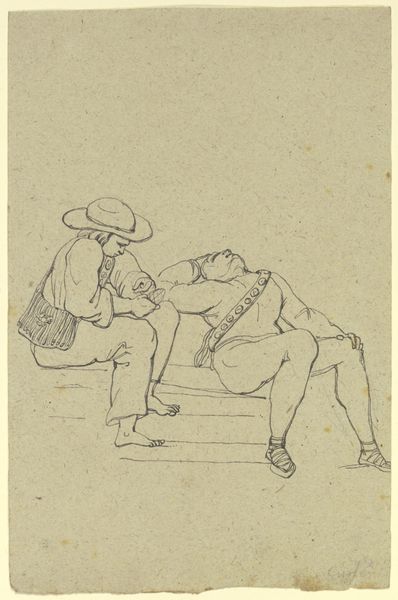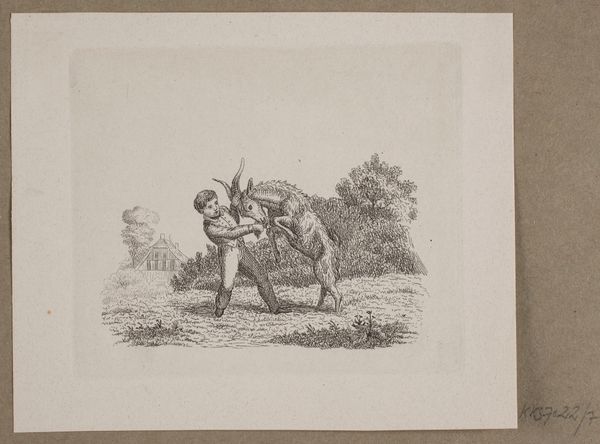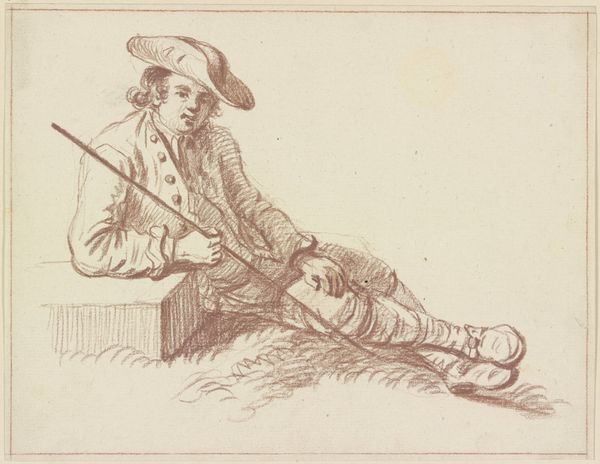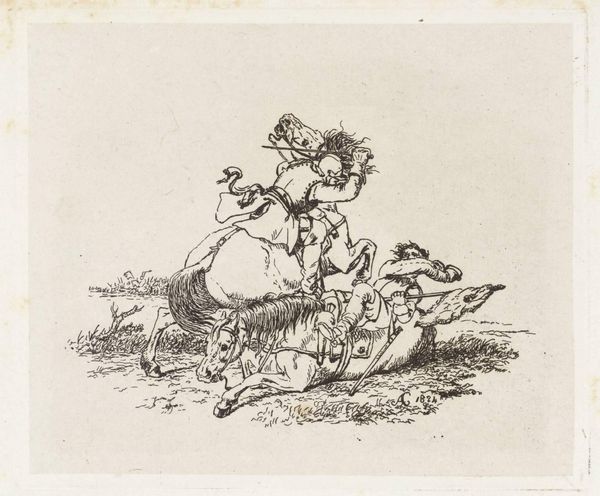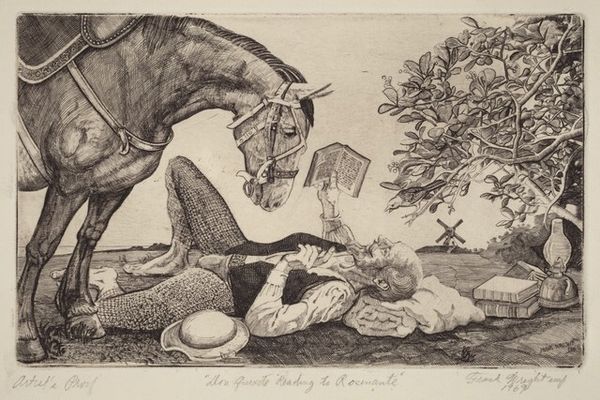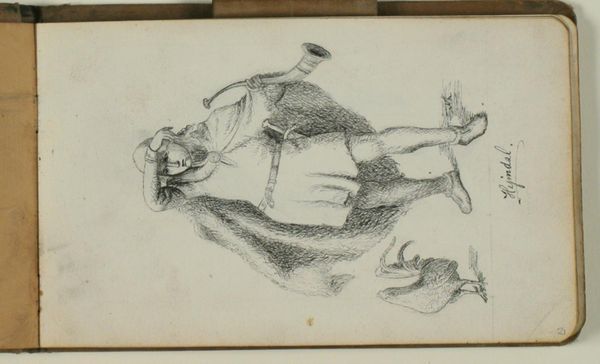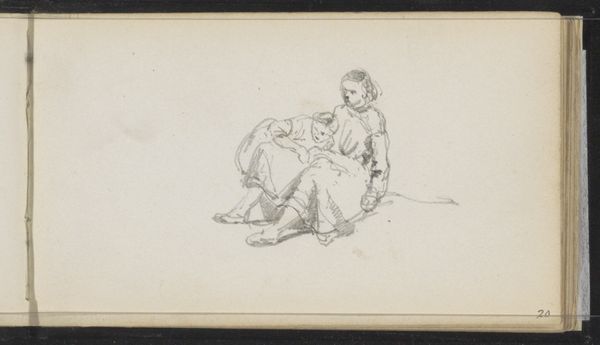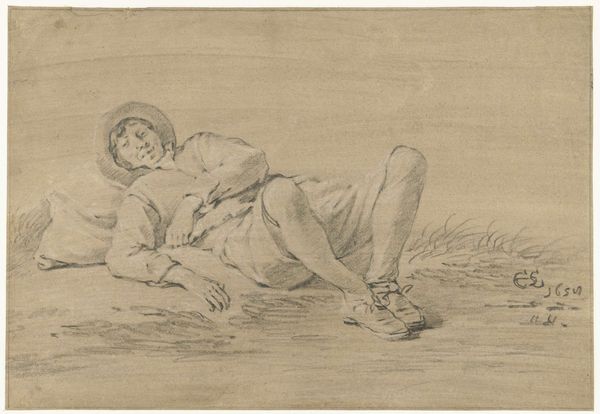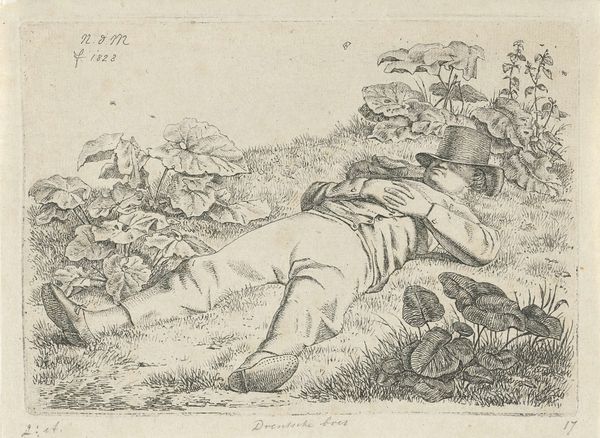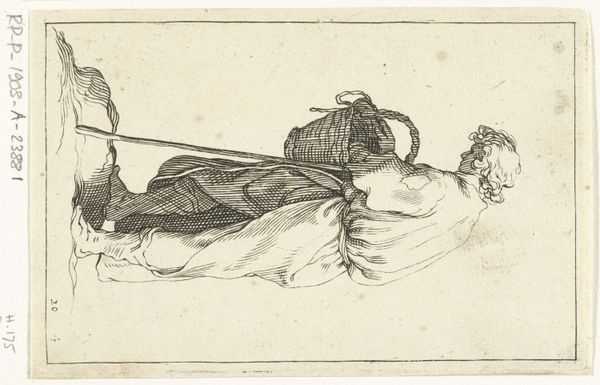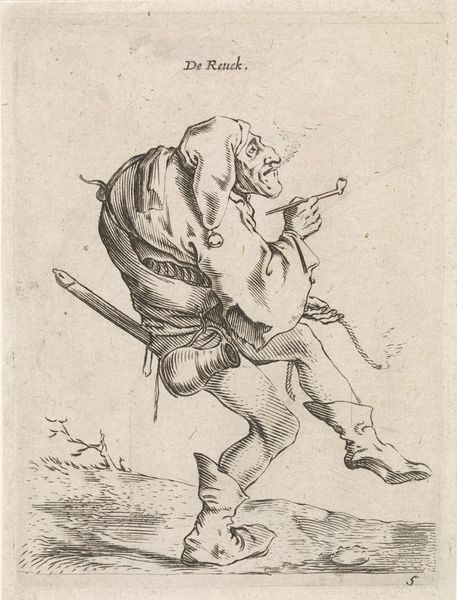
drawing, paper, ink
#
portrait
#
drawing
#
pen sketch
#
paper
#
ink
#
romanticism
#
genre-painting
Dimensions: height 35 mm, width 79 mm
Copyright: Rijks Museum: Open Domain
This etching, *Liggende jongen*, was made in 1828 by Anthonie Willem Hendrik Nolthenius de Man. As an etching, this image began as a metal plate, likely copper or zinc. The artist would have coated it with a waxy ground, then used a needle to scratch away the coating, exposing the metal beneath. The plate was then submerged in acid, which bit into the exposed lines, creating grooves that would hold ink. The beauty of etching lies in its directness. Unlike engraving, where the artist cuts directly into the metal, etching allows for a more fluid, drawing-like approach. Note the fine, delicate lines that define the figure’s form and clothing. These lines create a sense of depth and shadow, bringing the scene to life with a simple gesture. Consider the social context: etching was a popular medium among artists in the 19th century, offering a relatively accessible means of creating and distributing images. Nolthenius de Man’s choice of this medium speaks to a broader democratization of art, challenging traditional hierarchies between painting and printmaking, while giving us a more intimate glimpse into the everyday.
Comments
No comments
Be the first to comment and join the conversation on the ultimate creative platform.
